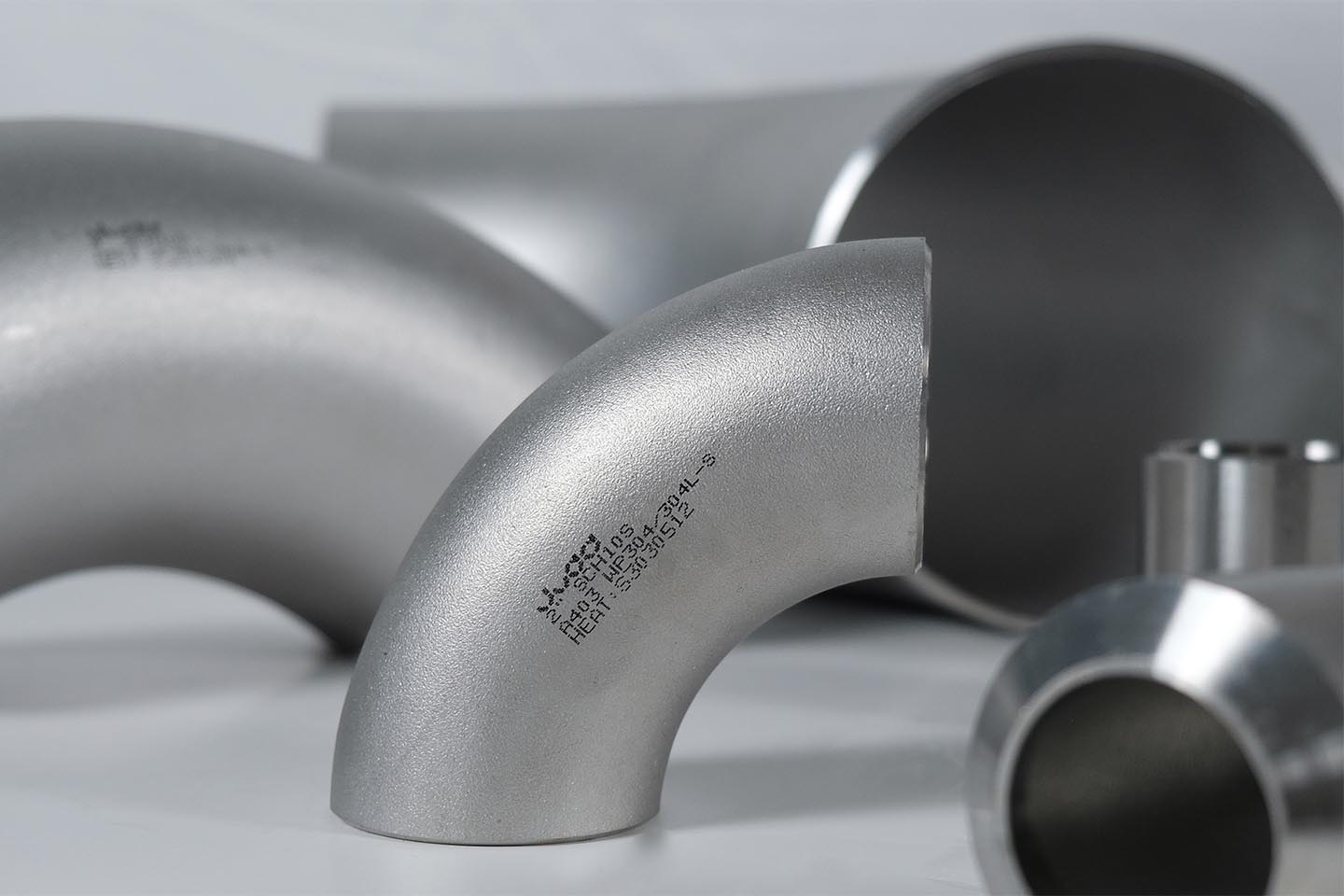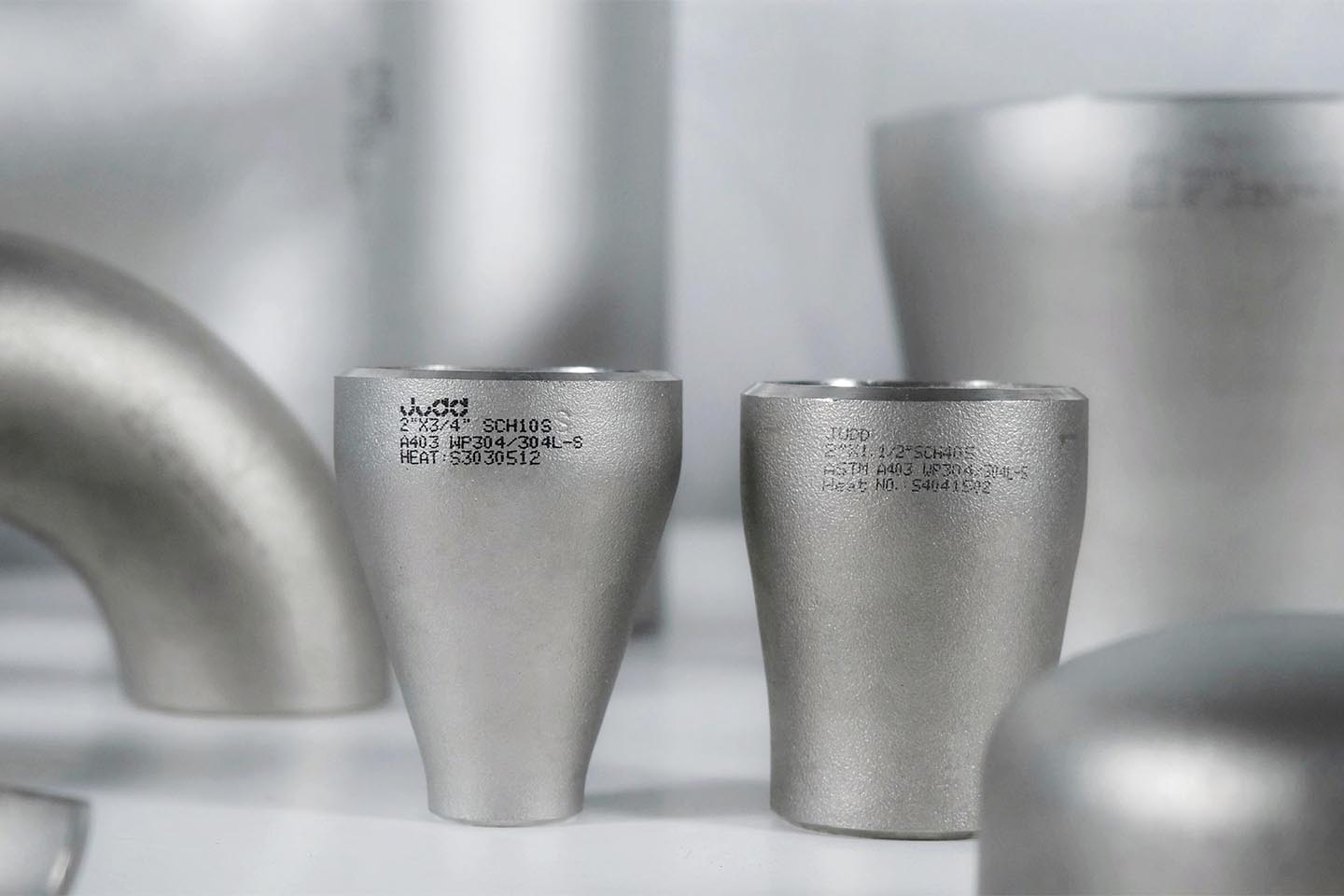




O
N
T
A
C
T


Stainless Steel Butt-Weld Fittings and Stainless Steel Flanges Industry News (2024-2025)
I. Market Size and Growth:1.In 2024, the market size of China's stainless steel forged flange industry has reached 18.6 billion RMB, and is expected to exceed 21 billion RMB by 2025, with a compound annual growth rate (CAGR) of around 7.5%. (Published on: January 10, 2025) 2. In 2024, the global stainless steel flange market sales reached 1.024 billion USD, and it is expected to reach 1.231 billion USD by 2031, with a CAGR of 2.7% (2025-2031). (Published on: January 27, 2025) 3.In 2024, China's total flange export volume was approximately 567,000 tons, with an export value of around 8.19 billion RMB. The total flange exports to Russia in 2024 reached 36,000 tons, showing a 16.1% year-on-year increase, accounting for 6.3% of China’s total exports. (Published on: December 15, 2024) II. Technology Development:4. With the promotion of advanced processes such as intelligent forging and precision CNC, the product yield rate of China's stainless steel forged flanges has increased from 88% in 2018 to 94% in 2023, but there is still a gap compared to the international leading level of 98%. (Published on: September 20, 2024)5. In 2024, the penetration rate of China's die-forged flanges reached 37%, and it is expected to rise to 45% by 2025, with cost advantages particularly in the small and medium-diameter market below DN300. (Published on: February 1, 2025)6. The powder metallurgy forging process is expected to be applied in bulk in the nuclear power flange field by 2025, with an expected production cost reduction of 22-25%. (Published on: March 5, 2025)III. Downstream Industry Demand:7. In 2024, the demand for stainless steel forged flanges in China's petrochemical sector accounts for 38.7% of the overall market. By 2025, the demand in this sector is expected to grow to 423,000 tons, with a CAGR of 6.5%, and its share of total demand will rise to 40.2%. (Published on: January 15, 2025)8. In 2024, the procurement value of stainless steel flanges in China's power sector reached 2.78 billion RMB. By 2025, with the restart of coastal nuclear power projects and accelerated construction of ultra-high voltage infrastructure, demand in this sector is expected to exceed 3 billion RMB. However, due to the trend of lightweight equipment in new energy, the market share may slightly decline to 23.8%. (Published on: February 10, 2025)9. In 2024, the market size of marine flanges in China's shipbuilding sector was about 1.94 billion RMB, and it is expected to reach 2.21 billion RMB by 2025. However, due to the cyclical adjustment of container ship orders, the demand share may slightly decrease to 17.6%. (Published on: January 20, 2025)10. In 2024, due to the improvement in hygiene standards, the demand for food-grade 316L flanges increased significantly, with a year-on-year growth of 15.2%. Over the next two years, with the tightening of GMP certification in the biopharmaceutical industry, sterile pipeline flanges are expected to maintain an annual growth rate of 8-10%. (Published on: November 1, 2024)IV. Regional Market:11. In 2024, East China occupies 45% of China's stainless steel forged flange market share, thanks to its complete industrial chain. Industrial clusters in Wenzhou, Zhejiang, and Wuxi, Jiangsu, have formed specialized production bases with an annual output value of over 5 billion RMB. (Published on: October 1, 2024)12. In 2024, South China’s demand for stainless steel forged flanges, driven by shipbuilding and nuclear power projects, grew faster than the national average by 2.3 percentage points. (Published on: November 15, 2024)13. In 2024, newly established stainless steel forged flange industrial parks in Central and Western China will contribute 15-18% of the new production capacity. (Published on: August 1, 2024)V. Industry Trends:14. In 2025, the Chinese stainless steel forged flange market will present three major trends: high-end, intelligent, and international development. (Published on: January 1, 2025)15. By 2025, customized services in China’s stainless steel forged flange market will account for over 35%, and the annual growth rate of flexible production line investment is expected to reach 28.7%. (Published on: March 1, 2025)16. By 2025, China’s green manufacturing standard system will be gradually improved, and the proportion of recycled stainless steel used in stainless steel forged flanges will exceed 40%. (Published on: April 1, 2025)17. By 2025, the after-sales technical service revenue of China’s stainless steel forged flange industry is expected to account for 18-22% of total enterprise revenue. (Published on: May 1, 2025)18. In 2025, digital transformation will become the key to the transformation of the stainless steel forged flange industry. It is expected that more than 60% of large-scale enterprises will complete the upgrade to intelligent manufacturing by 2025. (Published on: February 15, 2025)VI. Policy Impact:The "14th Five-Year Plan for the Development of the Raw Materials Industry" clearly proposes to focus on overcoming the key technologies for high-nickel alloy flanges, which will drive the proportion of R&D investment in China's stainless steel forged flanges from the current 2.1% to 3.5%. (Published on: June 1, 2024)The 14th Five-Year Energy Plan will drive investment in oil and gas pipelines, energy storage facilities, and other areas, creating new space for the Chinese flange market. (Published on: July 1, 2024)Source: XXXX Website [Website URL]
2025-05-27查看详情
Exploring Raw Material Supply Optimization and Industry Upgrading in the Stainless Steel Industry
Currently, global stainless steel production is growing significantly, while the industry chain of nickel, chromium, and manganese, the core raw materials for stainless steel, is undergoing a critical transformation. Recently, at the 19th International Iron Ore Market Seminar and 2025 Nickel, Chromium, and Manganese Ore Resources and Market Outlook Forum held in Qingdao by the China Nonferrous Metals Industry Association and Shanghai Steel Union E-commerce Co., Ltd. (MySteel), industry representatives focused on key issues such as resource distribution, market trends, and green applications of nickel, chromium, and manganese, exploring innovative paths for efficient resource allocation and industrial upgrading.Stainless steel is an essential part of the high-quality development of the steel industry. The stable supply of its core raw materials—nickel, chromium, and manganese—and technological innovation are the cornerstones of the high-quality development of the stainless steel industry.Chen Mingliang, Deputy Secretary-General of the China Minmetals Chamber of Commerce, pointed out that under the wave of new energy, the nickel market is undergoing a structural adjustment driven by the dual demand from stainless steel and power batteries. Policy changes in resource countries such as Indonesia and the Philippines are affecting the global supply pattern. The chromium market is heating up due to tightening overseas mineral sources and domestic capacity expansion, with price resilience becoming more evident. The manganese market is showing vigorous vitality due to stable demand from the steel industry and technological breakthroughs in lithium-ion manganese iron phosphate batteries. Meanwhile, issues such as green transformation under the "dual carbon" targets, innovations in sustainable mining technologies, and the building of supply chain resilience have become essential topics for the industry's high-quality development. Industry enterprises must seize policy opportunities, steadily expand overseas markets, and jointly address the dual challenges of resource security and green transformation.Wu Jingjing, Vice President of the Stainless Steel Branch of the China Iron and Steel Association, stated that the global stainless steel industry chain is undergoing profound changes. According to data, in 2024, China's stainless steel crude steel output reached 39.44 million tons, a year-on-year increase of 7.54%; imports were 1.87 million tons, and exports were 5.04 million tons. The apparent consumption of stainless steel was 32.49 million tons, a year-on-year increase of 4.54%. Imports of nickel ore, ferronickel, chromium ore, and ferrochrome were 38.09 million tons, 8.97 million tons, 20.93 million tons, and 3.66 million tons, respectively. The domestic ferrochrome production increased by more than 21%. As the world's largest nickel resource country and nickel producer, Indonesia's export volume of ferronickel and intermediate products continues to rise, becoming a key hub in the global supply chain. At the same time, challenges to industry development arise, such as fluctuations in the quality of South African chromium ore and the contradiction between Indonesia's nickel resource development and ecological protection. Only by working together can industry enterprises share development opportunities.In the view of Shen Guangming, General Manager of the Ferroalloy Division at Beijing Longyue Mining Co., Ltd., the global chromium ore supply chain presents characteristics such as industry monopolies, significant price fluctuations, and substantial geopolitical influences. Shen analyzed that global chromium ore production has continued to grow since 2020, with both South African chromium ore exports and Chinese chromium ore imports continuing to rise. Due to the production of new ferrochrome plants in Indonesia, imports of chromium ore have also grown rapidly in the short term. Based on market demand growth, Shen suggested that Chinese chromium enterprises strengthen their layout for chromium resources, focus on improving beneficiation and smelting technologies to enhance the utilization of chromium ore resources, and promote the upgrading of the chromium industry.Dai Lihua, Head of the Investment and Research Department of Tianjin Jinming Supply Chain Management Co., Ltd. and an analyst for the chromium industry chain, stated that the main source countries for China's chromium ore imports are South Africa, while imports from Indonesia and Zimbabwe are also growing. Regarding the supply of high-carbon ferrochrome, Dai analyzed that China, South Africa, and Kazakhstan are the main producers of high-carbon ferrochrome globally. Although the supply of high-carbon ferrochrome is in surplus, the supply in the current month is relatively tight. Meanwhile, the chromium ore supply is in a state of tight balance, and enterprises need to pay attention to the stock-to-sales ratio and potential risks in the chromium market.Cheng Jinyang, Director of the Carbon Business Unit at China ENFI Engineering Corp., analyzed that despite the continuous growth in global nickel demand, short-term supply remains surplus. He predicted that global nickel supply will experience varying degrees of surplus from 2025 to 2029, and may shift to a tighter market by 2030.Source: International Business DailyReporter: Tang Li
2025-05-27查看详情
- 1


